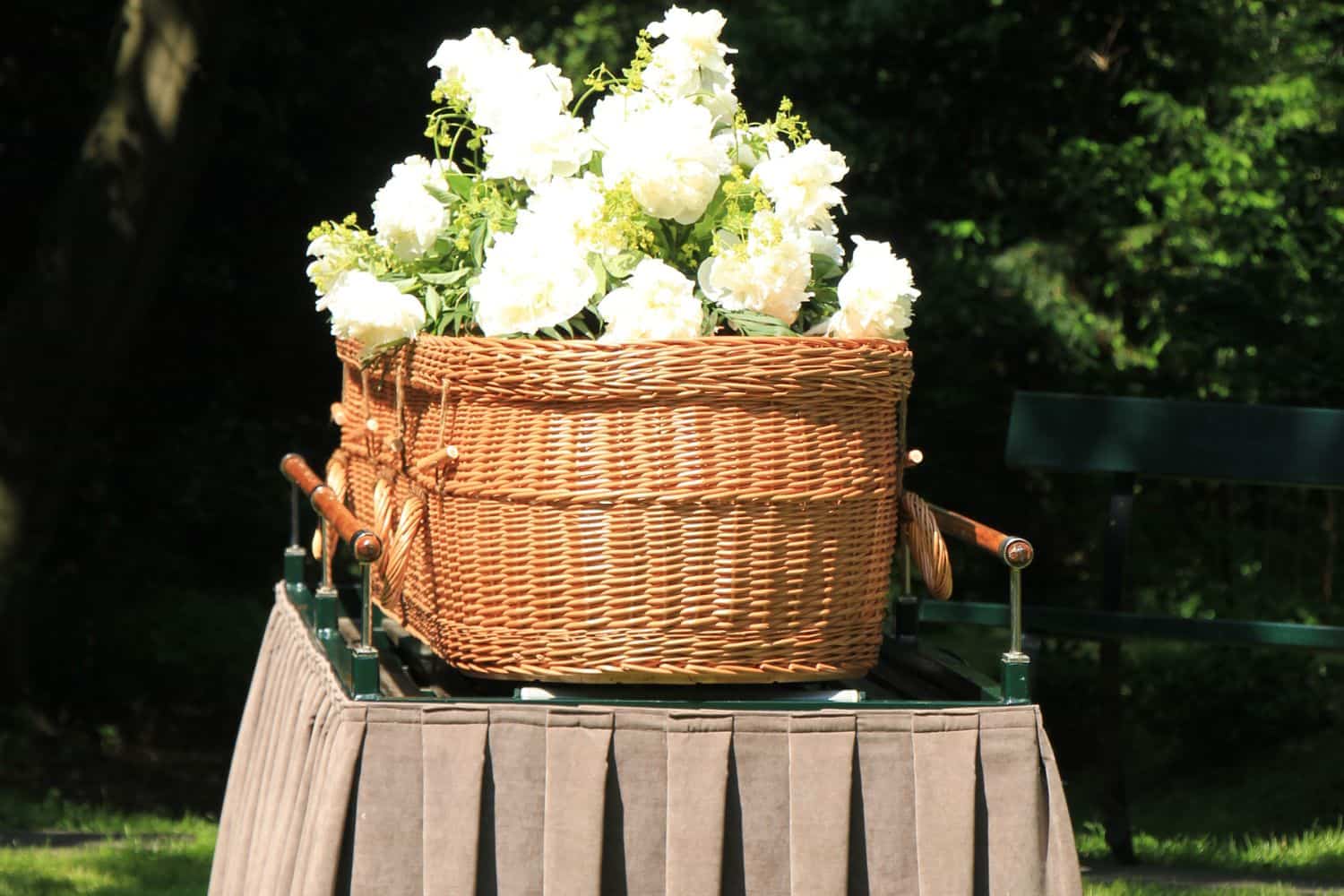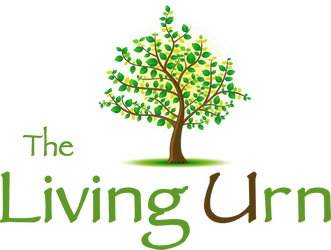
Green Burial Cost: Are Green Burials Cheaper?
When the time comes to commit our bodies to eternal rest, deciding how to do so can be overwhelming. From visitations to cemeteries to services, there are several options to consider. While most of us are familiar with traditional casket burials, green burials offer a more simplified, eco-friendly, and cost-effective way to say goodbye.

What are Green Burials?
A green burial, as the name may suggest, is a practice that focuses on reducing the environmental impact of laying a loved one to rest. All elements of the burial process are examined to ensure the conservation of natural resources. From the body's preparation to the ceremonial materials to the final resting place, green burials strive to maintain an eco-friendly send-off. There are several important steps that death care providers can follow to achieve a green funeral.
Eliminate Embalming
Funeral homes use embalming to preserve the body long enough to make it look as natural as possible for viewing. Embalming fluids are a mixture of toxic chemicals pumped into the body to stop the one thing the body does naturally upon death and decay. Embalming fluids are purely cosmetic; they serve no other purpose. Most of the chemicals don’t stay in the body for long. As the fluids are administered in the body, they get flushed right back out and down the drain.
Biodegradable Materials
When preparing the body for burial, it can be wrapped in a biodegradable shroud or placed in a casket made of natural wood devoid of harmful components, such as glue, metal, or varnishes. Woven caskets are typically made from bamboo, wicker, or willow. In traditional burials, a grave liner covers the sides and top of a coffin. Also, a vault made of concrete is often used as a “box within a box” to receive the casket in the ground and contain the decomposing body. With a green burial, the liner and vault are unnecessary.
Ecological Conservation
Once the body is laid to rest, the plot can be covered with local plants to stimulate the growth of new life in the ecosystem. Unlike traditional cemeteries, visitations are usually restricted to protect the delicate area. Many green cemeteries offer walking spaces and communal memorials for the bereaved to experience the living memorials that their departed loved ones have helped to cultivate.
Sustainability
Traditional cemeteries offer perpetual internment rights. Once a plot is purchased, that land belongs to that family forever. However, green cemeteries view internment space as a critical resource; they reuse graves to alleviate the burden of limited space. In this way, green burials offer greater sustainability.
How Much Does a Green Burial Cost?
The cost of a green burial can vary depending on the region and the type of burial site. For example, eco-friendly cemetery plots for green burials tend to be bigger than conventional cemetery plots. A larger plot can also mean an increase in cost. In general, green burials can cost between $1,000 to $4,000, which typically includes the burial plot, fees for the grave to be opened and closed, a plot marker, and a one-time endowment that goes towards a perpetual care fund for the maintenance of the natural burial site. Other expenses may include:
Burial Vessel
Eco-friendly caskets are more cost-effective than traditional ones, which are built to last longer. With a range of $50 to $500, biodegradable caskets made of cardboard are the most inexpensive option. Caskets made of natural wood, such as pine, can cost as low as $500. As the most expensive biodegradable vessel, wicker caskets are constructed from natural fibers like seagrass or bamboo; they start at about $1,000.
Burial Shrouds
While burial vessels can offer a nice touch for a green burial, they are unnecessary. Some people use a burial shroud made from natural, biodegradable fibers like linen, cotton, or wool. Burial shrouds can cost between $200 and $1,000.
Funeral or Memorial Service
Holding a funeral or memorial service can increase costs depending on what specific services you wish to have, such as a visitation, viewing, or wake. In general, costs could range from $1,000 to $5,000.
Are Green Burials Cheaper?
With its natural, environmentally friendly process, green burials offer impressive savings.
Cost of Green Burial vs Traditional Burial
When compared to traditional burials, green burials are substantially cheaper. Green burials eliminate expensive elements, such as embalming procedures, elaborate caskets, large headstones, and even vaults and mausoleums. According to the National Funeral Directors Association (NFDA), the national median cost of a traditional funeral with a viewing and burial in 2021 was approximately $7,848. For example, preparing a body for a traditional viewing includes embalming, applying makeup, dressing, and styling hair. These steps alone could cost around $2,200. Green burial memorial services typically forgo traditional viewing services. Instead, many opt for a simpler service. If led by a religious leader, families only pay an honorarium between $150 to $300.
Cost of Green Burial vs Direct Cremation
A direct cremation eliminates funeral services that require the presence of a body, such as viewings and visitations. Once the body is cremated, the cremains are returned in an urn of the family’s choosing. Urns can cost between $50 and $250. Families can choose to hold a memorial service at a later date. The average cost of a direct cremation is $1,100. Like green burials, direct cremation prices can fluctuate from $1,000 to $5,000, depending on the region. When it comes to a cost comparison, green burial and direct cremation are mostly even. Green burial and direct cremation can be the same. When doing a direct cremation, families can transfer the cremains into a biodegradable burial urn, which can be buried in a garden, forest, a natural burial cemetery, or any personal place with meaning. Another popular choice is to do a tree pod burial. With a tree pod burial, The Living Urn provides a Living Urn® BioUrn®
and planting system with a voucher for a tree so you can decide on the tree type. They are designed to be placed directly into the ground, allowing your loved one to become a part of the natural cycle of life.
More Reasons Why Green Burials are Popular
“Ashes to ashes, dust to dust.” Green burials exemplify a true return to nature, which is why it’s gaining popularity nationwide. Here are four more reasons why green burials are being embraced:
Simplicity
Wrapping a body in a shroud of clean, biodegradable linen or an unadorned vessel is a beautiful way to return the body to nature.
Resource Conservation
It takes excessive resources to bury a body via traditional methods. Caskets require metal, hardwood, and various coatings and adornments. In many cases, the burial site includes vaults reinforced with concrete. Green burials utilize fewer resources.
Eliminates Dangerous Chemicals
Formaldehyde is a carcinogen used in embalming fluid. Funeral professionals are exposed to this chemical when preparing bodies. It also ends up seeping into the environment.
Preservation of Nature
When we return our bodies to nature, we re-enter the circle of life. We contribute to the beauty and awe of the natural landscape, providing a beautiful gift for future generations. Most green cemeteries leave the hollowed ground untouched, allowing nature to run its course. That means lawn services, such as mowing, fertilizers, and other chemicals, are eliminated. Our loved ones can truly enjoy eternal rest.
Living Urn specializes in providing environmentally friendly urns to assist families with green burials. Whether you commit an eco-friendly urn to the soil or water, The Living Urn can help! Visit our store today to learn about the many beautiful burial urns we offer.


